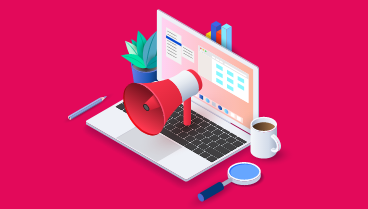
February 21, 2018
One of the most common questions we get from our prospects looking to implement or ramp up their inbound marketing efforts is "what is the difference between full funnel and closed loop marketing?" It's a good question, especially as marketers use the two terms interchangeably.
While the two share similar characteristics, there are key differences when it comes to full funnel versus closed loop marketing. Let's take a look.
Full funnel marketing guides prospects all the way through the sales funnel, using specific marketing tactics along each step of the way. The main aim of full-funnel marketing is to only invest in marketing that brings in a notable ROI.
Full-funnel marketing can be broken down into three main steps:
Read More: CRO - What It Is and How It Can Help You Increase Sales
Finding an online audience that wants what you’re selling is your first goal. Do this by ensuring your company can be found. Strategic keywords can help your company pop up on search engines, while alluring descriptions can prompt people to click to visit your site.
Present an attractive site that provides a remarkable experience to encourage visitors to stick around once they land there. Track visitor movements with cookies, retargeting them through search engines when they again search for words or phrases related to your offerings.
A variety of techniques can be used to nurture the audience so your company remains top of mind. You can invest in ads that continue to appear for the target until he or she takes some type of action. Since you’re paying to place ads in front of people who already showed some level of interest in what you’re selling, the ROI tends to be higher than pay-per-click (PPC) ads that don’t target a specific audience.
Other nurturing tactics that can help move prospects down the funnel include educational website content, ongoing email marketing, trigger campaigns or sequences that are triggered when people take a specific action on your site. Downloading an e-book, for instance, may trigger a set of emails they’ll receive over the next weeks.
Once members of the target audience become customers, it’s time to evaluate your efforts. Review the money spent vs. the money gained and how full-funnel marketing compares to other marketing tactics you’ve used.
Keep making changes as needed to continuously improve the overall process while increasing your overall ROI.
Unlike full-funnel marketing, closed-loop marketing doesn’t consider the job complete once a customer exits the funnel. It gives new buyers the same level of attention as new visitors. It also adds sales and customer satisfaction to the mix.
Closed-loop marketing involves collaboration between the marketing and sales teams, with both teams using insights and data gathered from marketing analytics to most effectively transform visitors into sales. Marketing gives sales info on leads that are ready to be closed, while sales gives marketing reports on what happens to the leads they receive.
The process involves integrating your customer relationship management software (CRM) with your marketing software. You want to track all marketing activities, from organic searches to email campaigns, social media marketing to paid programs.
The steps involved with closed-loop marketing are similar to those used with full-funnel marketing, yet a few notable differences exist. The basic steps for closed-loop marketing include:
As visitors convert to leads through nurturing, marketing can decide when those leads are ready to head to the sales team for a close. Since you’ve been collecting information on the lead throughout the nurturing process, the sales team will have adequate behavioral, demographic and personal info to close much easier than other sales tactics.
Read More: 6 Essential Questions Your Marketing Team Needs to Ask Sales
Once a visitor officially becomes a customer, the sales and marketing teams will have information that tells them:
Another must with closed loop marketing is to deliver what’s promised, and then some. Delighting customers keeps them coming back for more, which can be continuously encouraged using the closed loop marketing process again and again.
Closed loop marketing is a much more sophisticated and intricate form of marketing than full funnel. In addition to closing the loop with reports on leads that turned into customers, the strategy involves analyzing efforts after every stage of funnel. Communications are based on a lead’s previous actions, while both customer insights and satisfaction are enjoyed at a much deeper level. All these aspects make closed loop marketing primed to produce higher levels of ongoing success.